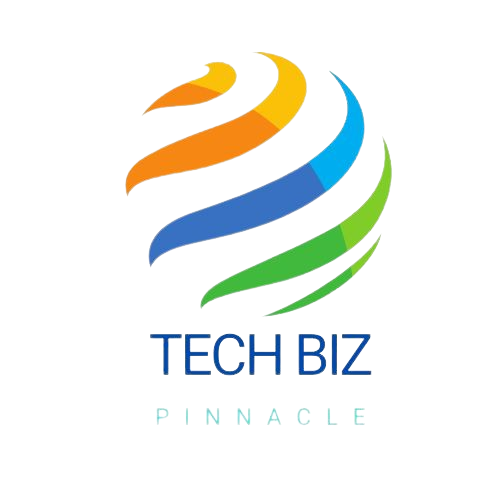Post Preview
Table of Contents
- Introduction to Cloud Computing in Enterprises
- Understanding the Basics of Hybrid Cloud
- Benefits of Adopting Hybrid Cloud Solutions
- Challenges Faced by Enterprises in Cloud Adoption
- Strategies for Successful Cloud Integration
- Real-Life Examples of Enterprise Cloud Success
- Future Trends in Cloud Computing
- Conclusion
Introduction to Cloud Computing in Enterprises
Cloud computing has emerged as a pivotal force in reshaping the IT landscapes of modern enterprises. In a time where agility, scalability, and continuous innovation are critical, cloud technologies offer an unmatched avenue for businesses to scale their operations globally without the constraints of traditional physical infrastructure. The implementation of cloud in enterprise frameworks is no longer a mere option but a requisite. The shift to cloud solutions allows organizations, particularly those previously limited by budget constraints, to access cutting-edge technologies and resources that had traditionally been the domain of larger corporations.
Today’s fiercely competitive business environment demands rapid adaptability, and cloud computing is the center of this transition. Cloud solutions are redefining enterprise efficacy by freeing resources, cutting operational costs, and facilitating global collaboration. Furthermore, the continuous advancements and enhancements in cloud technology make it an indispensable enabler for maintaining a competitive edge, ensuring enterprises can swiftly adapt to ever-changing market dynamics and customer demands in a fast-paced digital world.
Understanding the Basics of Hybrid Cloud
The hybrid cloud model continues to gain significant traction as organizations seek a balanced methodology for managing their IT workloads. Representing a synergy between public and private clouds, the hybrid cloud delivers the best of both realms. Hybrid cloud architecture enables enterprises to exploit the flexibility and scalability of public cloud resources while maintaining critical operations and sensitive data within the secure confines of a private cloud.
This strategic combination allows seamless data deployment, management, and application migration across varied cloud environments, fostering a holistic IT ecosystem. By adopting a hybrid model, businesses can optimize IT performance, bolster data compliance measures, and sidestep superfluous expenditures. Moreover, the modular aspect of the hybrid cloud encourages businesses to tailor solutions to meet their unique operational demands, thereby driving continuous innovation and ensuring sustainable efficiency.
Benefits of Adopting Hybrid Cloud Solutions
Adopting hybrid cloud solutions brings many strategic advantages that propel businesses forward in the digital realm. The hybrid model’s scalability is paramount for organizations experiencing fluctuating workloads. Firms can quickly scale cloud resources up or down in response to current needs, ensuring optimal performance while avoiding prohibitive costs.
Beyond scalability, hybrid clouds offer cost-efficiency. Businesses leverage public clouds for less critical tasks, mitigating the dependency on expensive in-house infrastructure investments. Security, a persistent concern in IT deployments, is inherently strengthened in this model. Sensitive data remains shielded within the private cloud domain, introducing an additional protective layer that complements the public cloud’s advantages.
Challenges Faced by Enterprises in Cloud Adoption
Despite the myriad benefits of cloud adoption, companies often face significant challenges during the transition. Security remains a paramount concern, specifically with the increasing threat of cyber-attacks and data breaches targeting cloud environments. Enterprises must implement robust security frameworks and protocols to seal data vulnerabilities and maintain compliance standards.
Another challenge is integrating legacy systems with contemporary cloud architectures, which often necessitates extensive overhauls of existing IT landscapes that require time, strategic planning, and investment. Additionally, effective cost management demands careful monitoring and adjustment to prevent unforeseen expenses, which could diminish the perceived cost benefits integral to cloud adoption.
Strategies for Successful Cloud Integration
To fully exploit the benefits cloud computing offers, enterprises must formulate strategic approaches during integration. The cornerstone of a successful transition is comprehensive planning underpinned by clear communication. Preliminary assessments are vital in identifying which workloads are suitable for migration, ensuring business continuity throughout the evolution.
Investment in staff training and skill development complemented by robust governance policies will nurture an environment conducive to hybrid cloud adoption. This involves forming cross-functional teams proficient in the nuanced workings of the hybrid model, thereby facilitating seamless operation and management of the cloud ecosystem. Viewing cloud integration as an ongoing strategic endeavor rather than a one-off project ensures processes are continually optimized for sustained success.
Real-Life Examples of Enterprise Cloud Success
Several enterprises have successfully incorporated hybrid cloud solutions into their operations. For example, industry leaders like Netflix and Dropbox have adeptly integrated cloud technologies into their core activities, enhancing service delivery and heightened customer satisfaction. These organizations sustainably leverage the hybrid cloud for storage and as a robust platform facilitating innovation and service delivery at unprecedented scales.
These case studies exemplify the transformative potential cloud computing holds, enabling organizations to enhance operational efficiency and develop innovative service offerings. They are powerful testimonials to the cloud’s capabilities, inspiring other enterprises to unlock its vast opportunities.
Future Trends in Cloud Computing
The cloud computing frontier is constantly evolving, with emerging trends poised to redefine the enterprise technology landscape further. Edge computing is becoming increasingly prominent, shifting computational capabilities closer to the data source, thereby reducing latency and optimizing bandwidth usage—qualities particularly beneficial for industries reliant on real-time data processing and swift decision-making.
Moreover, integrating artificial intelligence (AI) and machine learning (ML) within cloud platforms transforms how businesses operate, enabling predictive analytics and intelligent automation. These advanced technologies are anticipated to fuel further innovations, driving sustainable growth by turning vast data into actionable insights.
Conclusion
In conclusion, cloud computing continues to underpin modern enterprise IT, presenting a critical toolkit for innovation, efficiency, and scalability. By strategically implementing hybrid cloud solutions, businesses can position themselves at the forefront of technological advancement, maintaining relevance and competitive advantage. While challenges persist, a proactive approach to integration and management ensures that organizations fully leverage the dynamic capabilities of the cloud, creating new opportunities for growth and evolution.
As enterprises navigate complexities and embrace opportunities afforded by cloud computing, they stand poised for a future brimming with potential, equipped to maintain their competitive edge while driving sustained innovation and growth across their respective industries.

